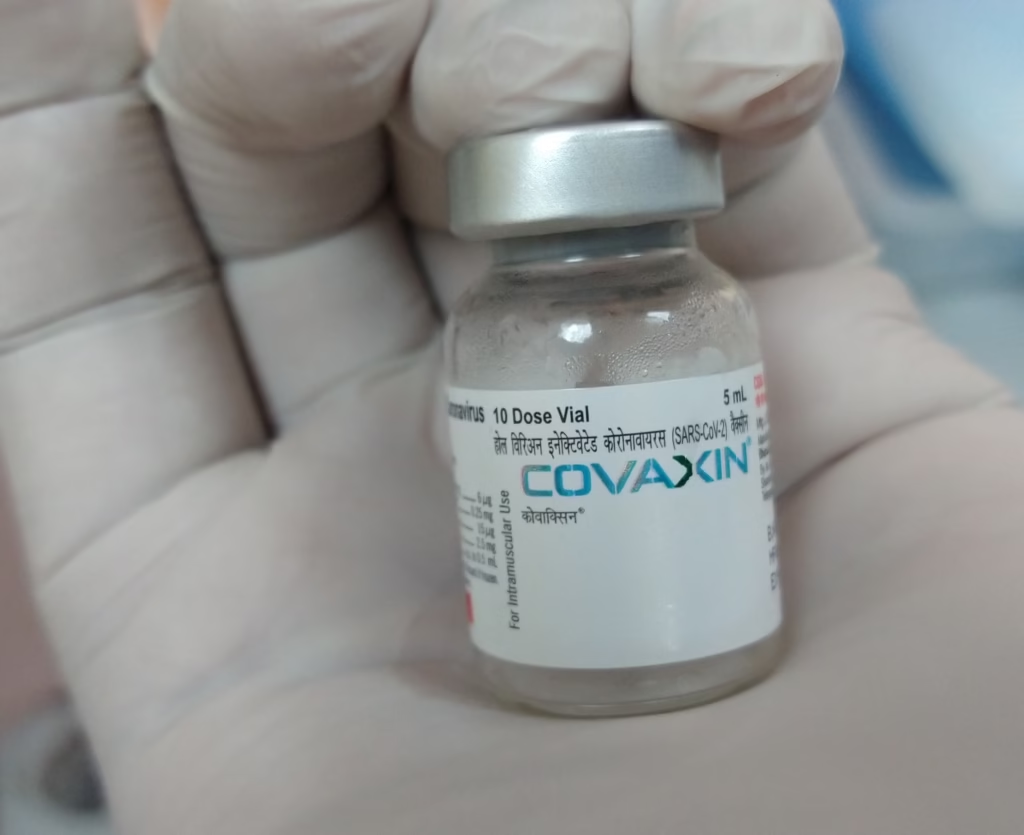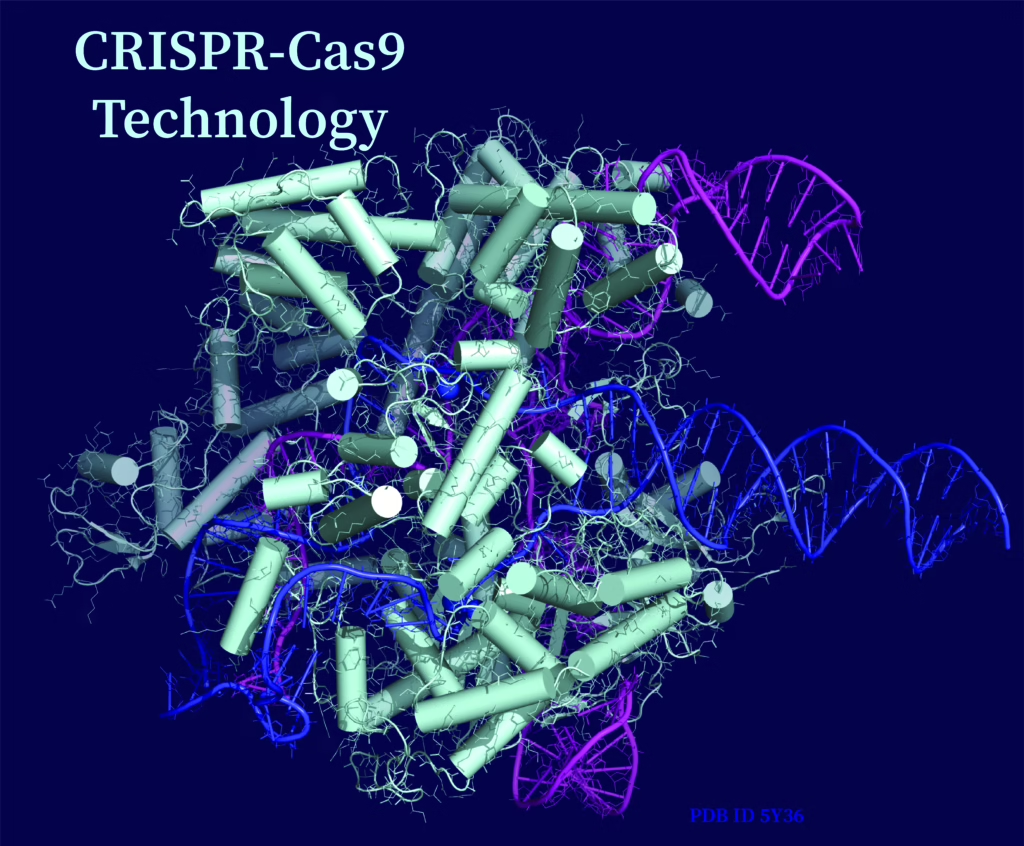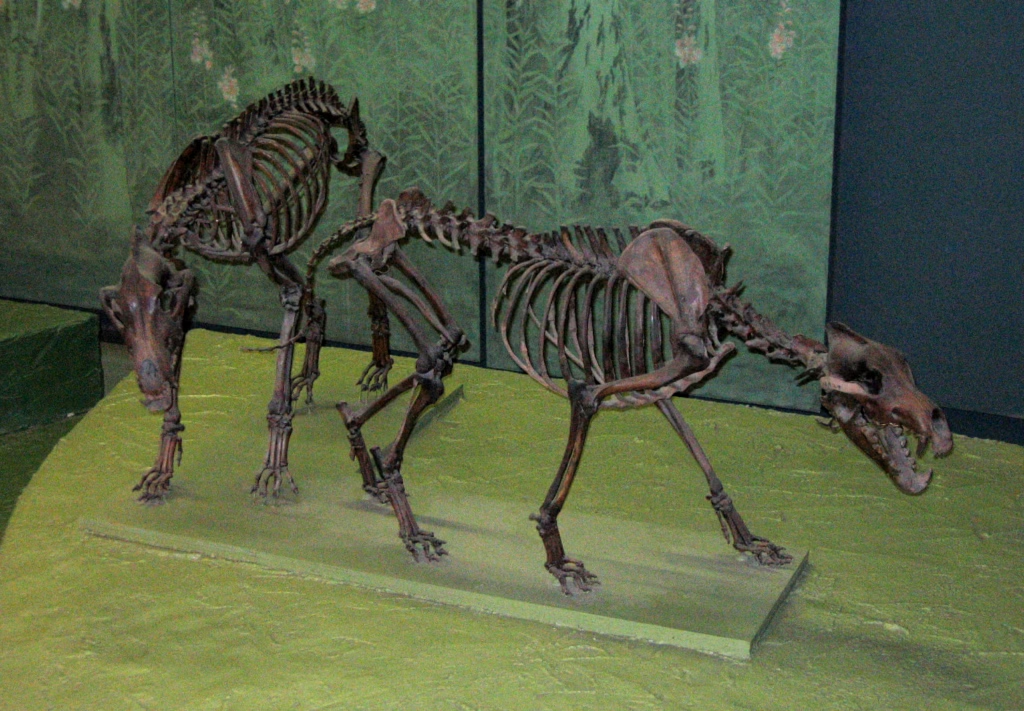What if science could bring back creatures from extinction?
Not in a movie, not in a dream — but in real life.
Welcome to the world of biotechnology: a field once limited to microscopes and lab coats, now rewriting the code of life itself. From curing genetic diseases to engineering drought-resistant crops, biotech has made unimaginable breakthroughs in just a few decades. But its most mind-bending frontier? De-extinction — the real possibility of resurrecting long-lost species like the iconic dire wolf, a prehistoric predator that last roamed North America more than 10,000 years ago.
In this post, we’ll break down what biotechnology truly is — not just the buzzwords, but the science — and how its evolution has led to ethical, environmental, and technological debates that sound straight out of science fiction. Then, we’ll dive into how gene editing tools like CRISPR, synthetic biology, and ancient DNA are making the concept of bringing extinct species back to life a rapidly approaching reality.
What Is Biotechnology?
Biotechnology is the science of harnessing living organisms, cells, and biological systems to create products and technologies that serve human needs. In simple terms, it’s where biology meets innovation — and the possibilities are vast.
From life-saving medicine to climate-smart agriculture, biotechnology is behind many of today’s scientific breakthroughs. For example:
Medicine: Synthetic insulin produced by genetically modified bacteria revolutionized diabetes care.
Agriculture: GMO crops have been engineered to resist pests, tolerate drought, and improve nutrition.
Environmental Cleanup: Bioremediation uses microbes to break down toxic waste, including oil spills and heavy metals.

Page URL: https://commons.wikimedia.org/wiki/
Attribution: Srikanth Ramakrishnan/BESTpedia, CC BY-SA 4.0 https://creativecommons.org/licenses/by-sa/4.0, via Wikimedia Commons
Types of Biotechnology:
Red Biotechnology (Medical): Develops gene therapies, vaccines, personalized medicine, and biologic drugs.
Green Biotechnology (Agriculture): Enhances crop yield, resilience, and nutritional value using genetic engineering and plant science.
White Biotechnology (Industrial): Focuses on eco-friendly production processes, such as creating biofuels, enzymes, and biodegradable materials.
Blue Biotechnology (Marine): Explores marine biodiversity for innovations in pharmaceuticals, cosmetics, and climate solutions.
The Rise of Gene Editing
Few breakthroughs in modern science have shaken up the world like CRISPR — a gene-editing tool that’s as precise as it is powerful. Short for Clustered Regularly Interspaced Short Palindromic Repeats, CRISPR has transformed biotechnology by allowing scientists to cut, add, or replace specific pieces of DNA in living organisms with astonishing accuracy.
How Does CRISPR Work?
Imagine CRISPR as a pair of molecular scissors guided by a GPS. Scientists design a guide RNA that matches the DNA sequence they want to target. This guide leads the CRISPR system (powered by an enzyme like Cas9) to the exact spot in the genome, where it makes a cut. The cell then repairs the break — and during that process, scientists can tweak the DNA to remove mutations, insert new genes, or silence unwanted traits.

Page URL: https://commons.wikimedia.org/wiki/
Attribution: Elena I Leonova, CC BY 4.0 https://creativecommons.org/licenses/by/4.0, via Wikimedia Commons
CRISPR in the Real World:
Treating Genetic Diseases: Trials are already underway to cure inherited conditions like sickle cell anemia, cystic fibrosis, and certain forms of blindness.
Engineering Better Crops: Crops can be made more resistant to pests, climate change, and disease — without introducing foreign DNA, making them more acceptable in global markets.
Potential Human Enhancement: Although still theoretical, CRISPR opens the door to editing traits like intelligence, strength, or even appearance — sparking both excitement and concern.
Biotechnology and the Power to Revive Extinct Species
If we can edit genes… can we reverse extinction?
Once the stuff of sci-fi and Jurassic Park fantasies, the idea of bringing back extinct species is no longer pure fiction. Thanks to advances in gene editing and ancient DNA analysis, a real scientific field has emerged: de-extinction.
What Is De-Extinction?
De-extinction is the process of reviving extinct species or recreating their genetic traits using biotechnology. While we can’t literally bring a species back from nothing, we can use genetic engineering tools like CRISPR to reconstruct extinct genes and reintroduce them into the DNA of a closely related living species — essentially reviving ancient traits in modern bodies.
How Does It Work?
The process often starts with extracting DNA from well-preserved fossils or remains. Scientists then compare that ancient DNA to the genome of a close living relative. Using CRISPR, they can edit the genome of the living species to match traits of the extinct one — like fur type, bone structure, or metabolism. Over generations of selective breeding and editing, the resulting organism may physically and behaviorally resemble the extinct species.
This isn’t cloning. It’s genetic resurrection — a blend of cutting-edge science, conservation strategy, and evolutionary history.
One of the most dramatic examples scientists are exploring is the potential return of the dire wolf — a legendary Ice Age predator larger and more robust than the modern gray wolf. With its genome partially decoded and its evolutionary relationships better understood, researchers are beginning to explore whether biotechnology could recreate a modern proxy for this long-lost species.
And unlike dinosaurs, dire wolves lived recently enough that usable DNA has survived — making them one of the most plausible candidates for de-extinction.
The Dire Wolf’s Return: Real-Life Science or Sci-Fi?
In a groundbreaking endeavor that blurs the lines between science fiction and reality, Colossal Biosciences has announced plans to create genetically engineered wolf pups — Romulus, Remus, and Khaleesi — designed to exhibit traits reminiscent of the extinct dire wolf (Aenocyon dirus).
The Science Behind the Creation
Utilizing ancient DNA extracted from dire wolf fossils dated at approximately 13,000 and 72,000 years old, scientists identified key genetic variants responsible for the dire wolf’s distinctive characteristics. They then employed CRISPR gene-editing technology to introduce around 20 specific edits across 14 genes in the genome of modern gray wolves (Canis lupus), aiming to replicate features such as larger size, robust build, and unique fur patterns.
From Laboratory to Life
While Colossal has not yet publicly confirmed the live birth of dire wolf-like pups, the company has indicated plans to implant edited embryos into surrogate domestic dogs. If successful, these pups would be raised in a 2,000-acre secured ecological preserve, providing a controlled environment to monitor their development and integration.
Not True Dire Wolves, But Close Imitations
It’s crucial to note that while these animals may exhibit dire wolf-like traits, they are not exact replicas of the extinct species. Experts emphasize that despite the genetic modifications, the resulting animals would remain genetically modified gray wolves rather than true dire wolves. The distinction lies in the fact that the dire wolf and gray wolf diverged evolutionarily millions of years ago, resulting in significant genetic differences that cannot be fully bridged through current gene-editing techniques.

Page URL: https://commons.wikimedia.org/wiki/
Attribution: Postdlf, CC BY-SA 3.0 http://creativecommons.org/licenses/by-sa/3.0/, via Wikimedia Commons
This pioneering project by Colossal Biosciences represents a significant step in the field of de-extinction, sparking both excitement and ethical debates about the implications of reviving traits of long-lost species.
Ethical and Ecological Questions
Should we revive extinct species?
The concept of de-extinction—resurrecting species that have vanished from the Earth—has transitioned from science fiction to scientific endeavor. While the idea captivates the imagination, it raises profound ethical and ecological questions that warrant careful consideration.
Potential Risks to Ecosystems and Animal Welfare
Reintroducing species into modern ecosystems is fraught with uncertainty. Ecosystems have evolved since these species disappeared, and reintroducing them could disrupt current ecological balances. For instance, introducing a species without natural predators could lead to overpopulation and resource depletion. Conversely, a predator reintroduced into an ecosystem where prey species have not adapted to its presence could cause unforeseen declines in those populations. As noted by the Ecological Society of America, “We have learned from biological invasions that putting new species into ecosystems can have large economic and ecological effects, sometimes positive and sometimes negative, but almost always difficult or impossible to predict or control.”
Animal welfare is another significant concern. The processes involved in de-extinction, such as cloning and genetic engineering, may result in high rates of developmental abnormalities and suffering among the first generations of resurrected species. Furthermore, the environments these species once thrived in may no longer exist, raising questions about their quality of life and survival prospects.
Conservation, Innovation, or Hubris?
Proponents argue that de-extinction could serve as a form of “biological restitution,” allowing humanity to atone for past environmental harms by restoring lost species and potentially revitalizing degraded ecosystems. However, critics contend that these efforts might divert attention and resources from conserving endangered species and preserving existing habitats. Paul and Anne Ehrlich caution that “even if reviving extinct species is practical, it’s an awful idea. It would take resources away from saving endangered species and their habitats.”
Moreover, there is a philosophical debate about the role of humans in nature. Does the ability to bring back extinct species grant us the right to do so? Or does it reflect a hubristic attempt to control and manipulate the natural world without fully understanding the consequences?
Scientific Perspectives
The scientific community remains divided on de-extinction. While some see it as a groundbreaking application of biotechnology with potential ecological benefits, others view it as a risky experiment with unpredictable outcomes. A study published in Functional Ecology emphasizes that for de-extinction to contribute positively, it must focus on increasing biodiversity, restoring ecosystem functions, and enhancing resilience. However, the authors caution that “the release of resurrected individuals into suitable areas of habitat… has received relatively scant attention, but is arguably the most critical component of the whole venture.”
In conclusion, while the allure of reviving extinct species like the dire wolf is undeniable, it is imperative to weigh the ethical implications and ecological risks carefully. Engaging in open, multidisciplinary dialogues will be crucial to navigate the complex terrain of de-extinction responsibly.
Disclaimer: This post is for educational purposes only. All scientific and technological developments referenced are based on publicly available information at the time of writing.
Share the knowledge with

